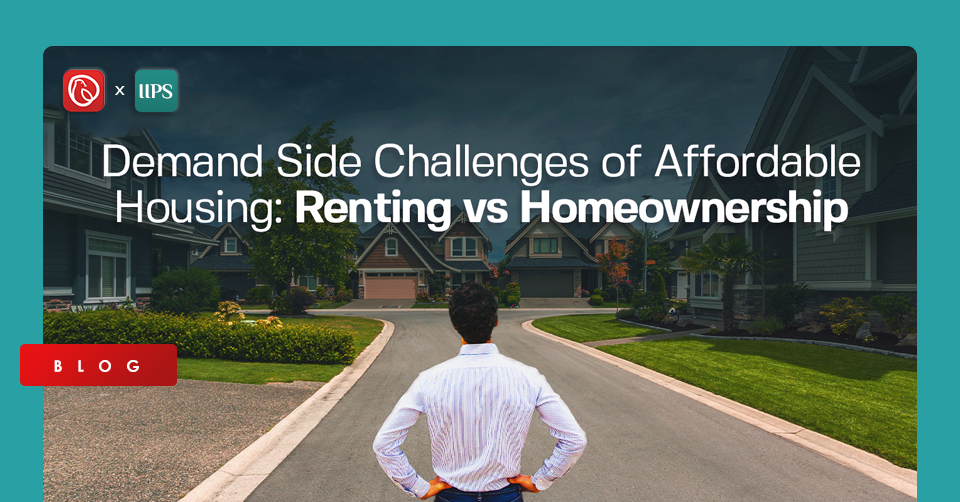
Rising home prices have contributed to increased wealth inequality. The rapid urbanization during the last few decades has created severe problems of housing in cities.
As demand continues to rise and the supply of affordable housing remains a challenge for the government, the price of existing units has greatly increased, leading to inequality in wealth generation. Owning a house can significantly contribute to the level of wealth an individual will accumulate over their lifetime. Demand-side challenges of affordable housing primarily concern the ability of city residents to rent a home or access credit and purchase a home. They include determining the eligibility of affordable housing subsidies, grants or exemptions according to income brackets, securing funds, mitigating risks of default, and most importantly, assessing the importance of rental versus ownership for long term affordability.
Affordable housing schemes often follow a targeted or a more universal approach. While most low-income households are focused on affordable housing, some countries consider their entire populations eligible for affordable housing. Household income is an important determinant of eligibility in many countries, but other demographic factors such as household size, number of children, citizenship status, and prior assets ownership also matter. Based on the income ladder, ranging from very low income to median income, housing can be based on social rental housing, affordable rental housing, market rental housing, and affordable homeownership. Government support for home seekers and renters can include income support and allowances for the very low-income bracket. Those who wish to maintain their current housing structures can also get housing preservation grants along with tax reliefs.
These structures can then be effectively rented to poor and low-income families. For the market rental housing sector, housing vouchers and rent assisted programs can be given, whereas affordable homeownership largely depends on mortgages, shared equity, stamp duty waivers, and home start initiatives for first homes. In the informal sector, it is more complicated to use the property as collateral for loans. Local governments can play their part in introducing measures to strengthen credit assessment, underwriting, and risk management. In some cases, informal structures in cities are first improved so they become more suitable for collaterals in loans before establishing an affordable housing project. Governments have also devised support mechanisms for slum improvement. Such improvements could pave the way for settlements to be regularized, with support from government agencies. (World Economic Forum, 2019)
An important aspect that influences demand for affordable housing is the evaluation of purchase models, rent or ownership. Homebuyers usually look for a safe and affordable place to live that can also be appreciated. Renters when hunting a house for rent look for secure tenure as long as it is needed, guarantees for privacy, permissions to carry out home improvements, and controls on rent increases. While homeownership comes with more rights and privileges, rental housing can have its advantages, and cities often lay down a strong case for rental markets. High homeownership is also strongly related to restricted labour mobility, with impacts on business creation and economic development. For many citizens, homeownership is not an option because it is not always easy to afford down payments on mortgages and construction costs. Ideally, a rental regulatory framework minimises vacancy, mandates a share of units be affordable, prevents segregation, and protects both landlords and tenants without distorting supply. For low to medium-income households and first-time buyers in many cities, homeownership has become a distant dream.
Affordable homeownership programs assist with the down payments in mortgages. However, when access to credit is easy, there is a risk of inflating a bubble in property prices. A monitoring mechanism is required to ensure that schemes benefit the intended beneficiaries. There is a high chance that governments end up subsidizing beneficiaries who are not most in need while there is also a chance that government-funded and subsidized homes are occupied by those who are below the income bracket. This could be dangerous as they would not be able to pay for the loan scheme and ultimately result in market problems. (Investopedia, 2021) (Florida, 2013).
DUBAI: Pakistani real estate developers and representatives showcased a range of commercial and residential investment…
ISLAMABAD: Capital Development Authority (CDA) is currently undertaking a major Rs652 million project to upgrade…
Karachi – Mayor Barrister Murtaza Wahab has announced the launch of a citywide anti-encroachment operation…
ISLAMABAD: CDA Chairman Muhammad Ali Randhawa has directed the immediate restoration of 23 non-functional water…
ISLAMABAD: In a major relief for the real estate sector, the federal government has decided…
DHA Islamabad-Rawalpindi (DHAI-R), one of the most trusted names in Pakistan’s real estate landscape, is…